The Geisha's Coiffure: A Deep Dive into Japanese Hair Artistry and Elegance
The Allure of the Geisha's Coiffure: More Than Just a Hairstyle
The world of the geisha is one veiled in mystique, tradition, and unparalleled artistry. Central to this iconic image is the geisha's coiffure, a masterpiece of sculpture and symbolism that tells a story of status, season, and sophistication. Known in Japan as Nihongami, these traditional hairstyles are far more than mere adornment; they are a living art form, a testament to centuries of cultural heritage and meticulous craftsmanship. Each polished curve, perfectly placed pin, and seasonal ornament is a deliberate stroke in a portrait of elegance, communicating a complex language understood by those initiated into Kyoto's 'flower and willow world.'
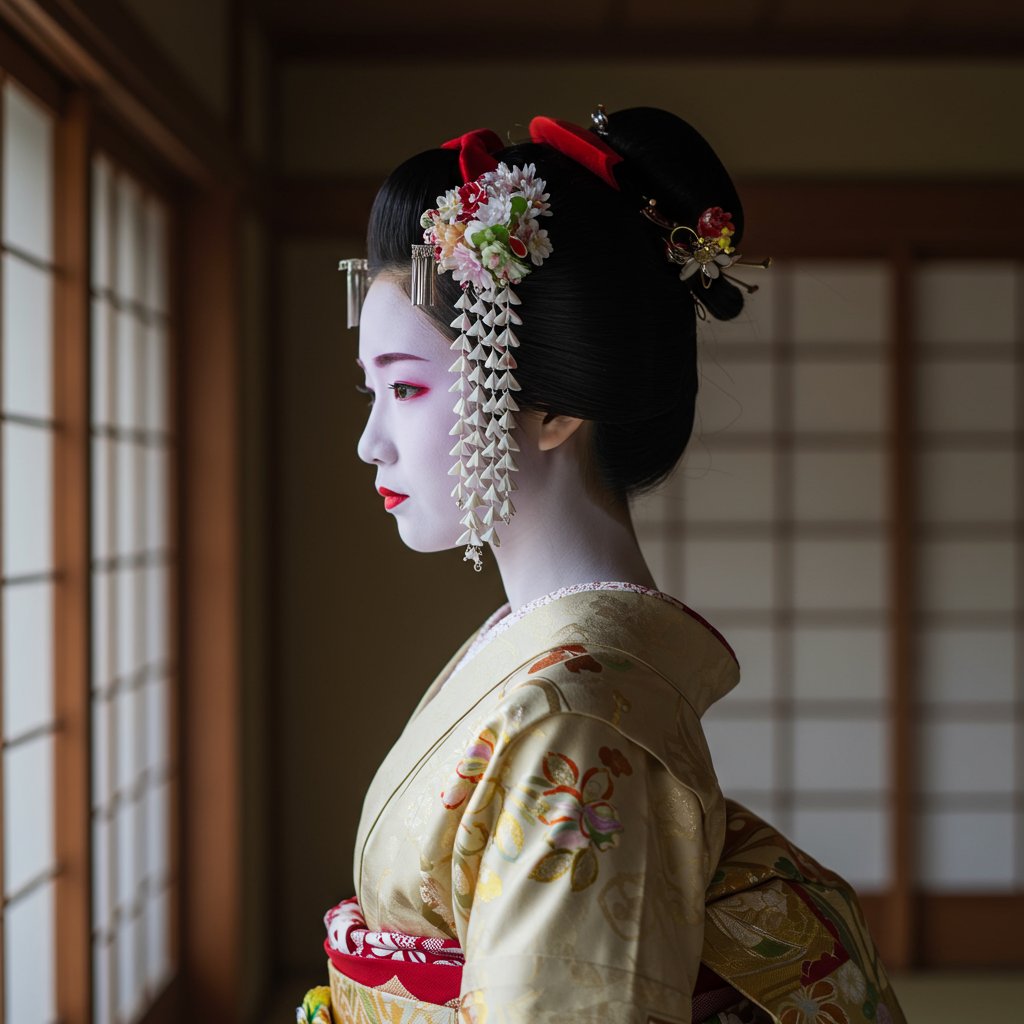
This deep dive explores the profound significance of the geisha's coiffure, moving beyond the surface to understand its historical roots, the evolution from apprentice to master, and the intricate techniques that bring these stunning creations to life. We will unravel the meanings behind different styles, from the youthful exuberance of an apprentice (maiko) to the understated grace of a full-fledged geisha (geiko). Understanding this art form offers not only a glimpse into a unique aspect of Japanese culture but also a profound appreciation for the dedication, skill, and history woven into every strand of hair. It is a celebration of how hair can transcend fashion to become a powerful emblem of identity and artistry.
Unveiling Nihongami: The Foundation of Japanese Hair Artistry
Nihongami (日本髪), which translates to 'Japanese hair,' refers to a wide array of traditional Japanese hairstyles that flourished primarily during the Edo period (1603-1868). While now seen only on special occasions, in historical dramas, or within the geisha community, these styles were once a part of daily life for women of various social classes. The geisha's coiffure is the most famous and meticulously preserved form of Nihongami. Its structure is complex, typically involving sections of hair separated, waxed, tied, and sculpted into intricate shapes that frame the face and elongate the neck. The foundational silhouette often features wings of hair at the sides (bin), a puff of hair at the back (tabo), and a topknot (mage) of varying complexity.
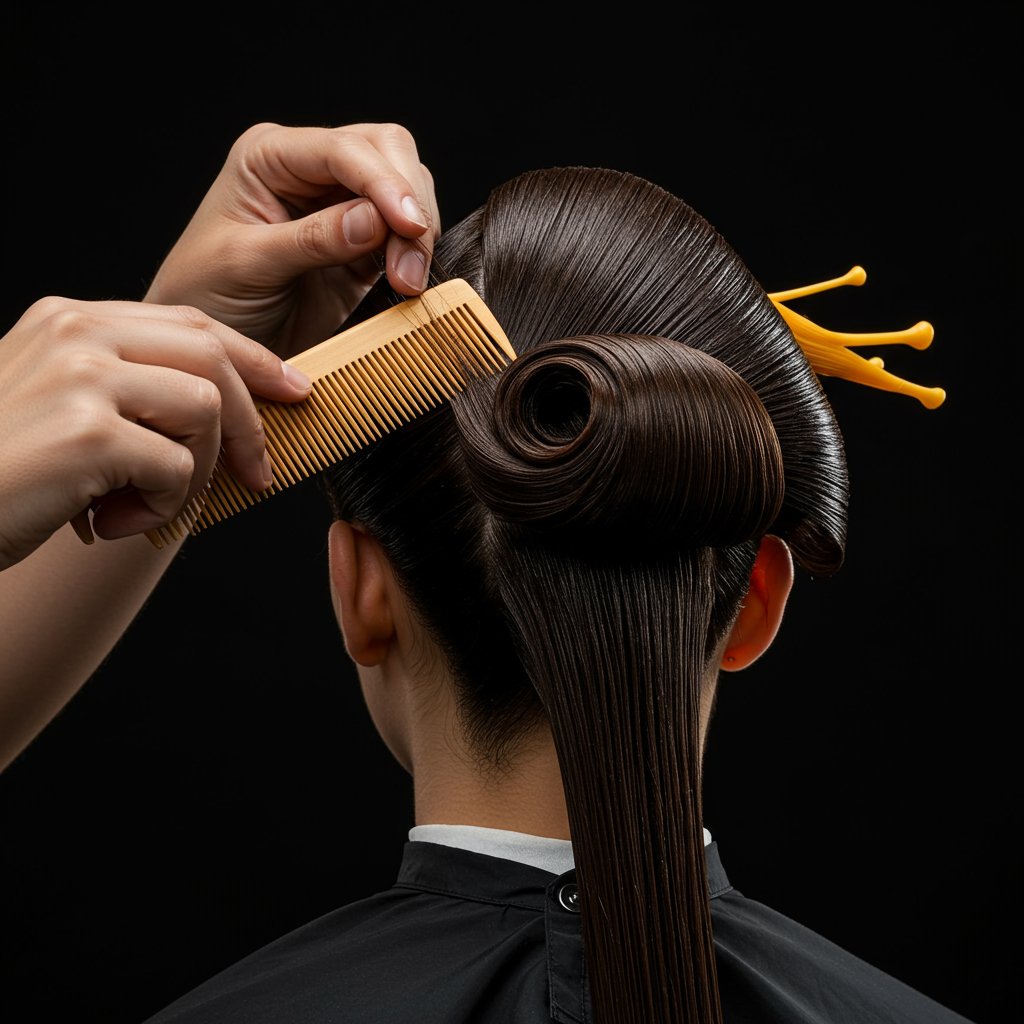
The development of Nihongami was influenced by social changes, theatrical arts like Kabuki, and the pursuit of aesthetic ideals. The use of a special camellia oil and hard wax called bintsuke-abura was crucial. This wax allowed stylists to mold hair into gravity-defying shapes that could last for a week or more. The creation of these hairstyles was, and still is, the work of highly specialized artisans known as keppatsu-shi. The skills required are immense, passed down through generations, and demand a deep understanding of structure, balance, and the subtle nuances that define each specific style. This art form represents a cultural peak in hairstyling, where the coiffure became a canvas for expressing identity, status, and artistic sensibility.
A Maiko's Story: Charting the Journey Through Hair
The hairstyle of a maiko (apprentice geisha) is one of the most visually striking aspects of her appearance, and it is created with her own natural hair. These styles are elaborate, youthful, and change to mark distinct stages of her apprenticeship, which typically lasts five years. Each coiffure is a public declaration of her seniority and progress.
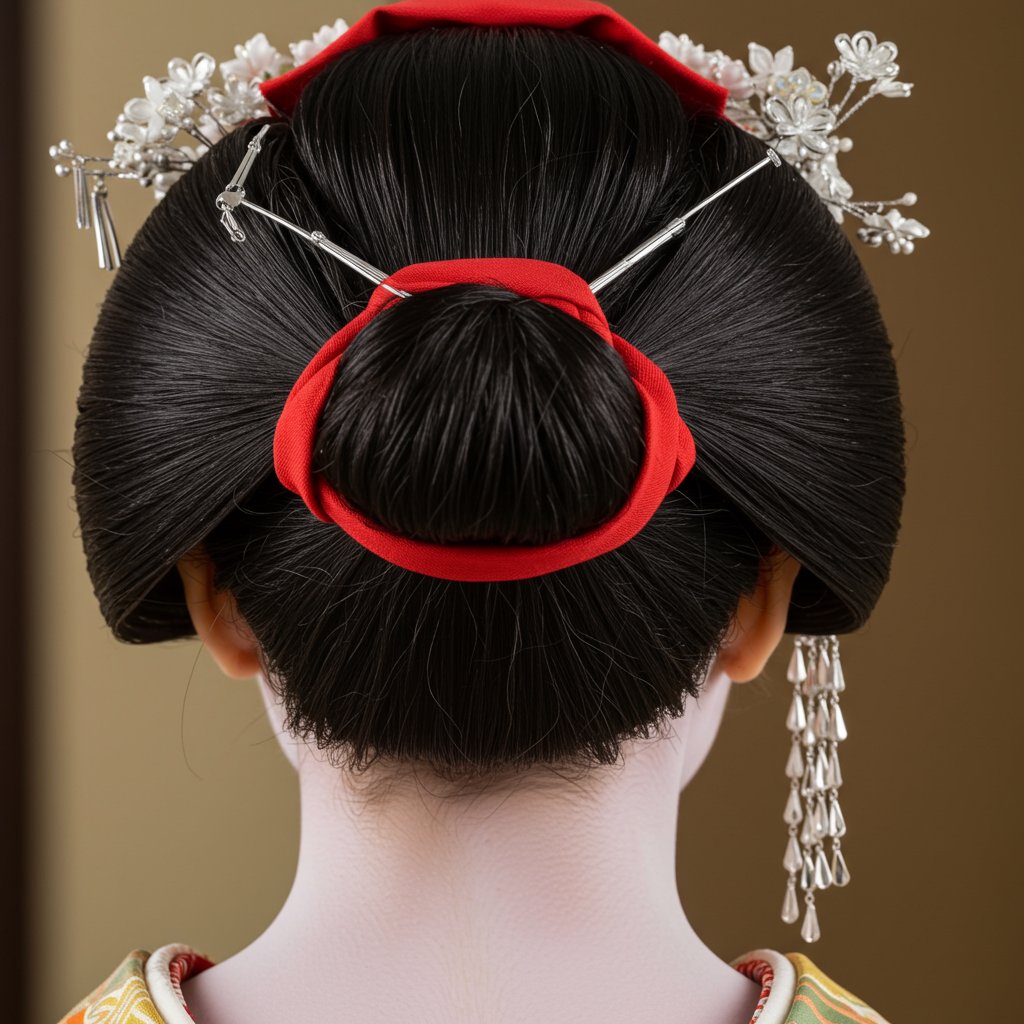
The First Year: Wareshinobu
The most recognizable maiko style is the Wareshinobu (割れしのぶ), worn during the first one to two years of training. It features a prominent, rounded bun (mage) on top, which is split in the center to reveal a flash of red silk, known as kanoko. This glimpse of red is considered alluring and youthful. The style is large and visually heavy, adorned with an abundance of flowing, dangling kanzashi (hair ornaments), signifying her debutante status. The entire coiffure is a symbol of innocence and burgeoning artistry.The Senior Apprentice: Ofuku
After two or three years, a maiko graduates to the Ofuku (おふく) style. Visually, it is more subdued than the Wareshinobu. The bun is flatter and more boxy in shape, and the red kanoko is replaced with a silk triangle of cloth called a chigire, tucked discreetly at the base of the topknot. This transition signifies a step towards maturity and greater sophistication. The kanzashi also become less flamboyant. This hairstyle indicates that the maiko is now a senior apprentice, respected for her growing skills in conversation, dance, and music.The Final Stages: Yakko-shimada and Katsuyama
In the final months before her graduation to geiko status, a maiko may wear special hairstyles for specific events. The Yakko-shimada (奴島田) is worn for the New Year and Setsubun festivities, featuring a high, intricate topknot adorned with special ornaments. For the Gion Matsuri festival, she might wear the Katsuyama (勝山), another elaborate style with large, distinctive loops. These styles are temporary markers of significant cultural moments and the maiko's proximity to becoming a full-fledged geiko, representing the culmination of her long and arduous training.The Geiko's Signature: Understated Elegance and the Art of the Wig
Upon graduating, a maiko becomes a geiko (the Kyoto term for geisha), and her appearance undergoes a significant transformation towards subtle, refined elegance. The most notable change is in her hair. A geiko no longer uses her own hair for her coiffure; instead, she wears a custom-fitted wig known as a katsura. This is a practical shift, freeing her from the weekly, hours-long hairstyling appointments and the discomfort of sleeping on a special pillow (takamakura) to preserve the style. The katsura is a symbol of her professional status and mastery.
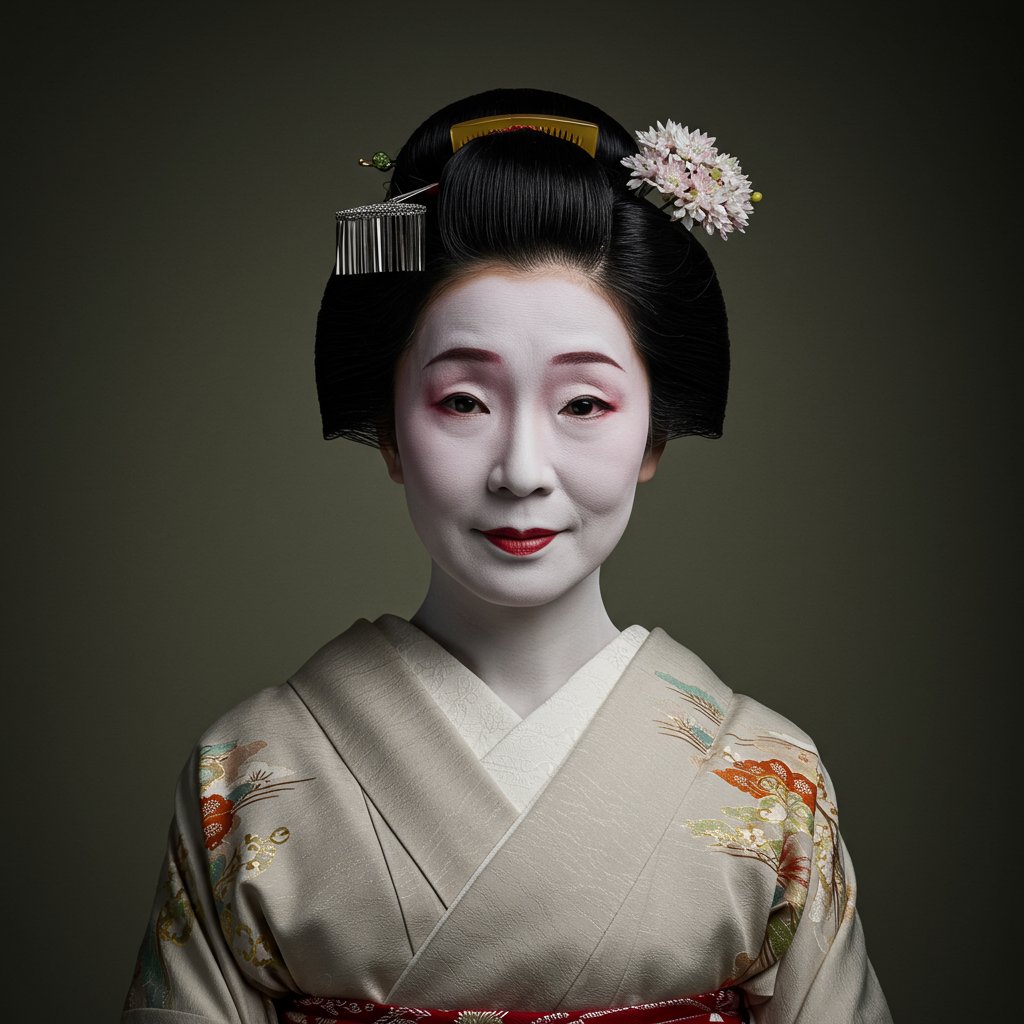
These wigs are not simple accessories; they are masterpieces of craftsmanship, handmade by highly skilled artisans. Each katsura is custom-molded to the geiko's head for a perfect, natural-looking fit. The primary style worn by geiko is the Taka-shimada (高島田), a sleek and elegant chignon that is less ornate than any of the maiko styles. A variation, the Tsubushi-shimada (潰し島田), is a slightly flatter, more mature version worn by senior geiko. The ornamentation is also drastically reduced. Instead of the maiko's dangling flowers, a geiko wears only a few simple, elegant kanzashi—typically a simple comb (kushi), a single hairpin (kogai), and perhaps a small, seasonal pin. This minimalist aesthetic signifies her inner artistry, which no longer needs to be broadcast through an elaborate exterior.
The Artisan's Kit: Traditional Tools and Sculpting Techniques
The creation of Nihongami is an act of sculpting, requiring a set of specialized, traditional tools that have remained largely unchanged for centuries. The process is painstaking and requires immense precision. The most essential tool is the tsuge gushi, a comb hand-carved from Japanese boxwood. These combs are anti-static, smooth the hair cuticle, and distribute the styling wax evenly. Different combs are used for different stages: larger ones for detangling and shaping, and finer ones for perfecting the surface texture.

The key to the coiffure's structure is bintsuke-abura, a hard wax made from Japan wax tree sumac. It is warmed over a small charcoal heater until pliable, then applied meticulously to sections of hair. The stylist uses their fingers and the combs to shape the waxed hair into the distinctive wings (bin), nape sections (tabo), and topknots (mage). Flat strips of paper (mottoi) and cords are used to tie and secure the sections before they are sculpted into their final form. The final touch is often a light application of camellia oil for a high-gloss, polished finish. This entire process can take hours and is a testament to the stylist's physical dexterity and artistic vision.
The Language of Kanzashi: A Seasonal Symphony in Hair
Kanzashi are the ornate hair ornaments that are a defining feature of the geisha's coiffure, especially for a maiko. They are more than just decoration; they are a visual calendar, indicating the season, festivals, and the wearer's seniority. The art of choosing and wearing kanzashi is an integral part of the geisha's training and aesthetic.
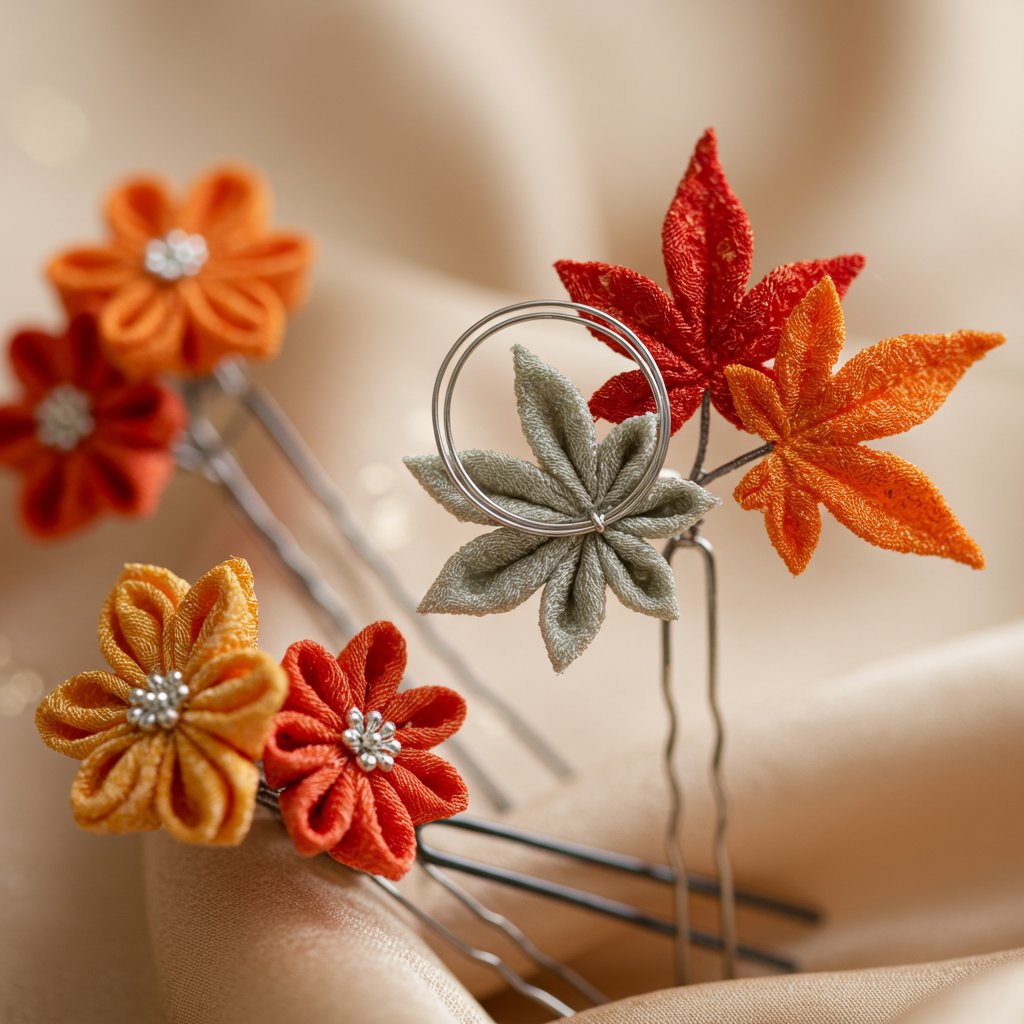
Each month has its designated floral motif. For example, plum blossoms in February signify the end of winter, while cherry blossoms (sakura) adorn the hair in April, celebrating their fleeting beauty. In May, wisteria (fuji) and iris (ayame) are common, followed by the willow (yanagi) in summer. Autumn brings Japanese bellflowers (kikyo) in September and rich maple leaves (momiji) in November. For New Year's, special kanzashi featuring rice stalks and auspicious doves without eyes are worn; the maiko paints in one eye for a favorite geiko, and the geiko paints in the other.
The type of kanzashi also denotes rank. Junior maiko wear elaborate arrangements with dangling petals called shidare. As they become more senior, the arrangements become smaller and more compact. A full-fledged geiko wears very few, very simple kanzashi, as her artistry speaks for itself. This 'language of flowers' woven into the hair adds a layer of poetic beauty and symbolism to the overall presentation.
Modern Interpretations & Respectful Appreciation
The intricate beauty of the geisha's coiffure continues to inspire modern hairstyling, particularly for formal events, weddings, and editorial photoshoots. While a direct replication is often impractical and can border on cultural appropriation, one can draw inspiration from its core principles: structure, elegance, and meaningful adornment. Professional stylists can adapt elements of Nihongami to create stunning, contemporary updos.
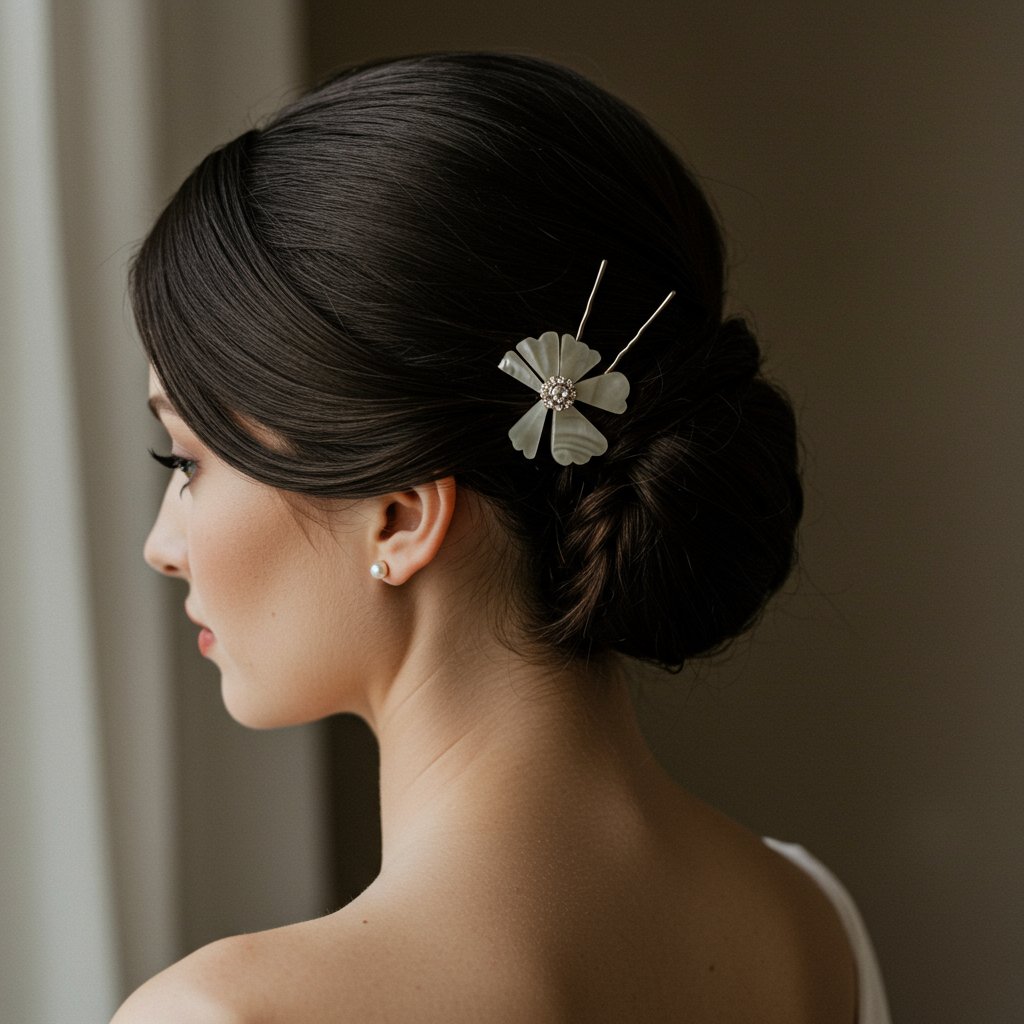
To respectfully incorporate these elements, focus on the aesthetic rather than mimicry. Consider creating a sleek, polished updo with a beautiful silhouette that emphasizes the neck. Instead of a full set of kanzashi, a single, beautifully crafted hair pin or an elegant comb can be used as a statement piece. The key is to acknowledge the source of inspiration with respect and to focus on capturing the spirit of elegance and artistry. It's about paying homage to the craft, not creating a costume. When consulting with a stylist, discussing these inspirations can lead to a unique and deeply personal formal hairstyle that feels both timeless and modern.
Frequently Asked Questions about the Geisha's Coiffure
1. Is a maiko's hairstyle made from her own hair?
Yes, absolutely. A maiko's elaborate hairstyles are created using her own natural hair. The process is so demanding that it often requires the maiko to grow her hair to waist-length. This is one of the key distinctions between a maiko and a geiko, who wears a wig.
2. How long does it take to create a traditional Nihongami style?
The initial styling for a maiko can take several hours. After that, she visits her hairstylist (keppatsu-shi) once a week for maintenance and reshaping. The geiko's process is simpler; putting on her custom katsura takes much less time, but the creation of the wig itself can take weeks or months.3. How do maiko sleep without ruining their hair?
Maiko sleep on a special lacquered wooden pillow with a cushioned top called a takamakura. This cradle supports the neck, allowing the head and hair to remain elevated and untouched during sleep. Learning to sleep this way is considered a difficult but necessary part of their training.4. Why do geiko wear wigs instead of using their own hair?
The switch to a katsura (wig) is a practical and symbolic step. It frees the geiko from the weekly ordeal of hairstyling and the discomfort of the takamakura. It also signifies her professional status; her artistry is now her main focus, and the wig provides a consistent, perfect appearance without the strain on her natural hair and scalp, which can suffer from years of waxing and pulling.5. What is the red ribbon in the maiko's hair?
The red silk ribbon seen in the Wareshinobu style is called a kanoko. Its visibility through the center of the topknot is a symbol of a maiko's youth and innocence and is considered subtly alluring. When she graduates to a more senior style, this prominent feature is removed or replaced with something more discreet.Conclusion: An Enduring Legacy of Artistry
The geisha's coiffure is a profound cultural artifact, a living tradition that embodies the Japanese aesthetic ideals of beauty, discipline, and symbolic expression. It is a testament to the idea that hairstyling can be elevated to a high art, where every element is rich with meaning and history. From the vibrant, story-filled styles of the maiko to the serene, sophisticated elegance of the geiko's katsura, the Nihongami of the flower and willow world is a powerful narrative woven from silk, wax, and hair.
By understanding the artistry, tools, and symbolism behind these creations, we gain a deeper appreciation for the dedication required to preserve such a beautiful and complex heritage. The geisha's coiffure serves as an enduring reminder of the power of hair to communicate identity, tell stories, and stand as a timeless symbol of elegance and artistry that continues to captivate and inspire across the globe.


